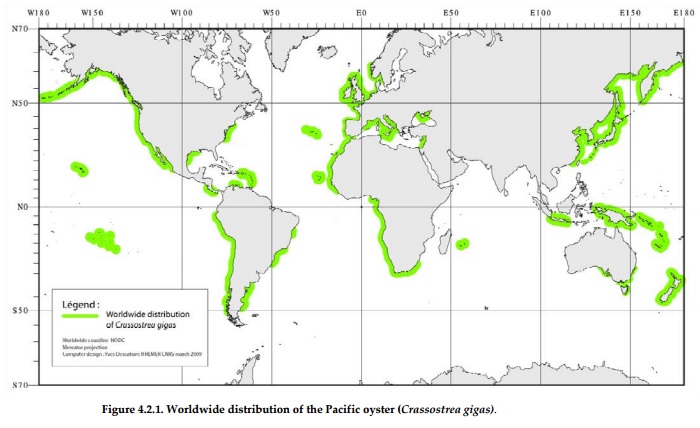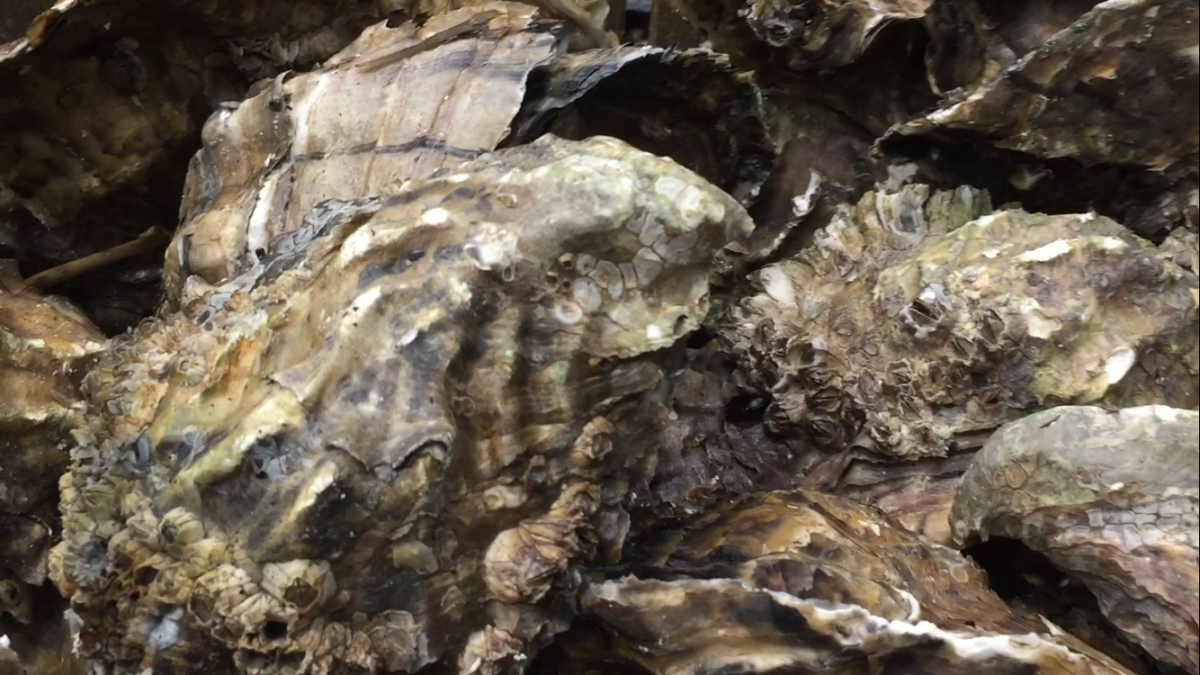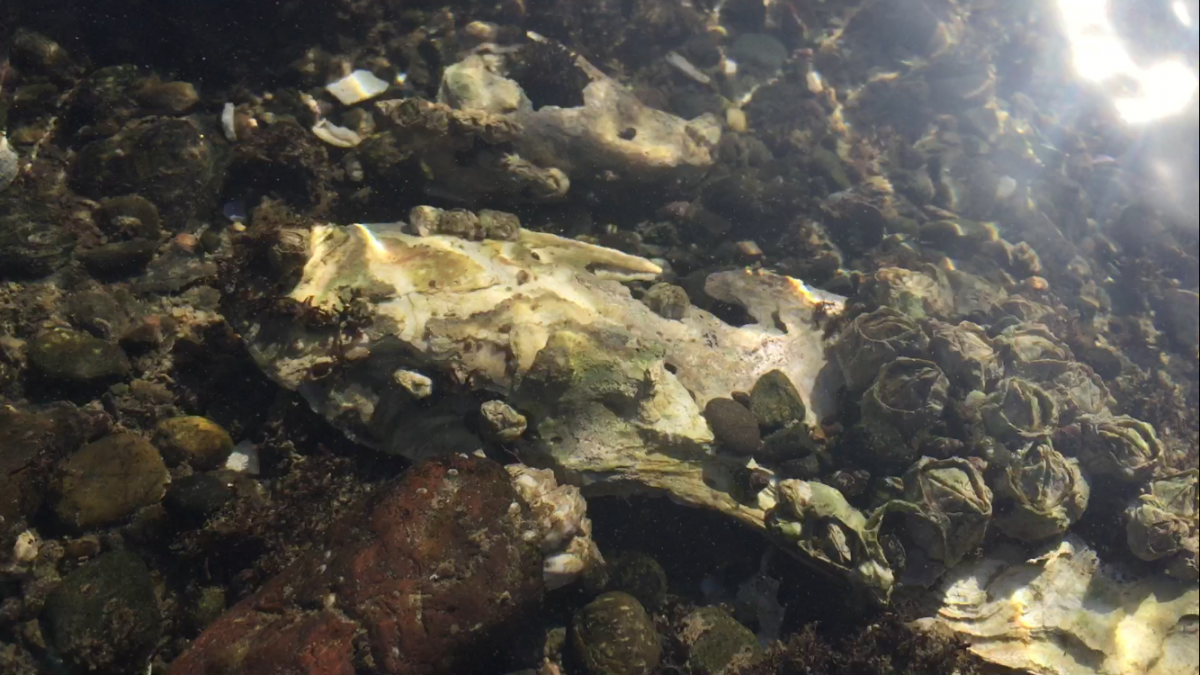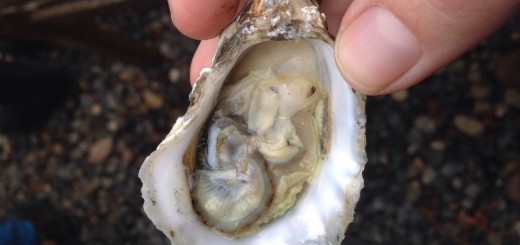Natural History of Oysters (Part 1)
Written by Lily H.
Crassostrea gigas, or the Pacific Oyster is native to Japan and other areas of northeast Asia. The first historical record of Pacific aquaculture comes from 16th century written records from Hiroshima Bay. Japanese production grew in part by technological innovations and the movement of production areas farther offshore, due to industrial development and poorer environmental quality. Production in Japan has now stabilized and Pacifics have been introduced to many countries worldwide for aquaculture. (Miossec et al., 11)
Over-harvesting and pollution in the 19th and early 20th centuries caused rapid depletion of native oyster species in North America, especially the west coast. C. virginica oysters from the east coast were brought over to restore production but the attempts were mostly unsuccessful as the species did not do well. In 1922, Pacific Oyster spat was introduced from Japan to Washington State and within a few years proved to be a successful transplant. (Miossec et al., 13) Pacifics are a hardy species, less affected by pollution and disease, and are fast growing – twice as fast as virginicas. They now grow wild in the Northwest, proving their adaptability. In Washington they are produced in bays along the Puget Sound, Hood Canal, and west coast. Many of these are sold under names of specific bays they grow in such as Eld Inlet, Hama Hama, and Willipa Bay. (Jacobsen, 18;165-197)
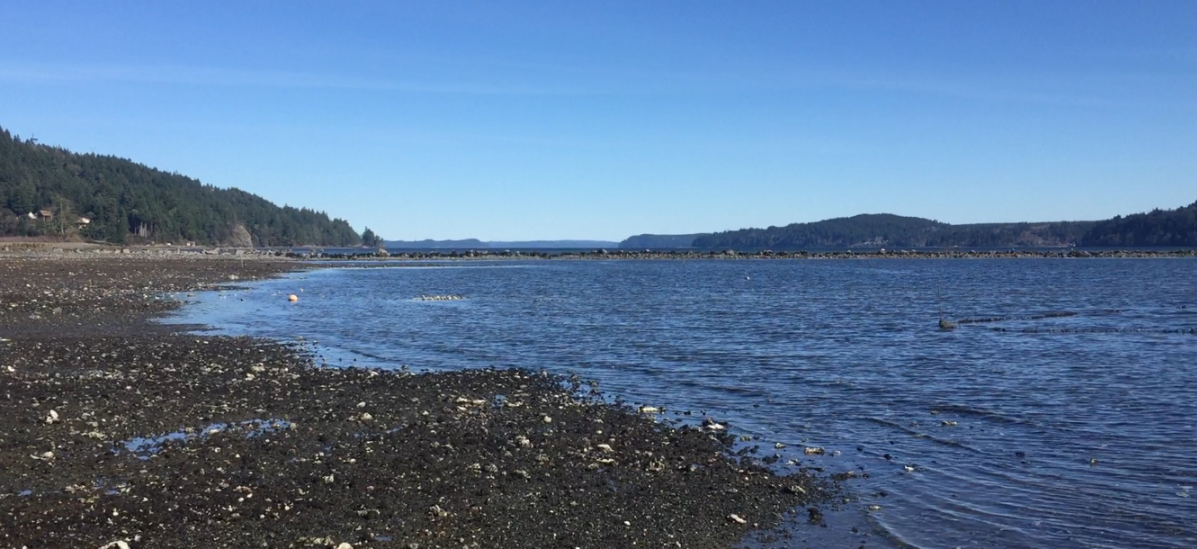
View during high tide of Hama Hama Oyster farm, where the Hamma Hamma river meets the Hood Canal. photo by Lily H.
The life cycle of a Pacific Oyster (C. gigas) starts when mature adults release gametes into the water column. A single female may release up to 50-200 million eggs, though most, if fertilized at all, do not survive to become mature oysters. Those that do survive, once fertilized become larvae and swim around freely for about 2-3 weeks growing up to 300µm, before permanently setting on a hard substrate. (Anchor, 2) Substrates ideally include mature oyster shells or rocks, but they can settle on smaller material in muddy or sandy areas as well. (Miossec et al., 5) It takes about 1 year for them to reach sexual maturity. Pacifics are protandric hermaphrodites and are able to change gender, usually male to female. When resources such as food and space are abundant, the sex ratio is skewed toward females, with males predominant when resources become scarce. (Anchor, 3) Spawning usually occurs during summer when water temperatures are warmer, though many factors may influence the cycle. During this time, over 50% of the oyster’s mass is devoted to reproduction. (Harris, 1)
Pacific oysters success comes from their ability to adapt to environmental conditions, temperature fluctuations, and high turbidity. They can thrive in both marine and estuarine waters in the intertidal zone up to 40m. (Anchor,1; Miossec et al., 1) Temperature is the factor that drives all the physiological processes of an oyster and Pacifics tolerate 8-25°C. For salinity, they grow best in water between 24 and 28 ppt, but can tolerate as low as 5 ppt salinities for short periods. (Harris, 3; Miossec et al., 4) In times of spawning, optimal temperature and salinity is 20-25°C and 35 ppt respectively. (Anchor, 3) Oysters are filter feeders, consuming suspended plankton and organic matter. Because of their high filtration rate they are able to improve water quality, however at the cost of reducing food availability to native species. (Harris, 7) An oyster’s shell may offer protection against temporary stresses, including some pollutants and abnormal temperature/salinity conditions. However, large scale pollution and toxins in the water inhibit growth rate and yield, which is harmful to the environment as well as commercial aquaculture production. Ocean Acidification, caused by climate changes lowering the pH of ocean water, reduces calcium production which oysters need to build their shells. This issue will also impact aquaculture in the next decades if this trend continues. (Miossec et al., 6; 22)
While Pacific Oysters have shown to be more resilient than other species, they are still susceptible to harm from some of the common diseases, parasites, and predators. Prevention for some of these may be done through good management practices as well as working to find more disease resistant genetics.
| Disease/Parasite | Description | Common Symptoms |
| “Foot Disease” | resulting from infection with the fungus Ostracobable implexa; no treatment or prevention measures are available. | Wart‐like protuberances on the inner surface that may weaken the oyster |
| Herpesvirus infections | caused by viruses whose features, cellular locations, and sizes are characteristic of members of the Herpesviridae family | caused by viruses whose features, cellular locations, and sizes are characteristic of members of the Herpesviridae family Mortalities; loss of appetite; lesions |
| Mikrocytosis (Denman Island disease) | related to a small (2–3 μm), intracellular protistan parasite of unknown taxonomic affiliation; lesions and mortalities occur in April ‒ May, following a 3 ‒ 4 month period when seawater temperature is <10 °C | Tissue necrosis (lesions form); mortality (predominantly in older individuals) |
| MSX (multinucleated sphere unknown) | caused by the protistan parasite Haplosporidium nelsoni; responsible for massive mortalities of the eastern oyster but, in contrast, appears to be hosted by the Pacific oyster at very low prevalence (<2%) | Mortality |
| Nocardiosis (fatal inflammatory bacteraemia (FIB) or focal necrosis) | an infection caused by an actinomycete bacterium and is usually associated with mortalities during late summer and autumn | Mortalities; reduced thermotolerance; large lesions |
| Oyster velar virus disease (OVVD | affecting C. gigas larvae >150 μm, was reported in hatcheries in Washington during the 1980s | Blisters form; Mortality |
| Vibriosis | the most commonly encountered bacterial disease associated with intensive bivalve culture in hatcheries and nurseries | Tissue necrosis; reduced feeding rate; erratic swimming behaviour (larvae); mass mortality. |
(Anchor, 12; Miosecc et al., 8-9)
Many different organisms prey on the Pacific oyster including starfish, boring gastropods and bivalves, spionid polychaetes, crabs, stingrays, and ducks. Japanese Oyster Drills in particular are a major problem in many places around the world, especially Washington. These kill the oysters after boring through their shells and feeding on them. Flatworms are also an issue, attacking primarily young spat. Both species have been well adapted to growing areas they have been introduced to due to global transport. (Miosecc et al., 10) The movement of oysters for aquaculture is one of the largest vectors for the transport of marine invasive species. (Harris, 8)
Header photo by Lily H.

